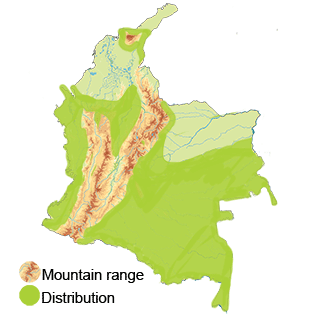Double-toothed Kite
The Double-toothed Kite (Harpagus bidentatus) Read in Spanish
Appearance: The Double-toothed Kite is a medium-sized kite, measuring around 34-40 cm (13-16 inches) in length with a wingspan of approximately 65-75 cm (26-30 inches). It has a distinctive appearance with a black head, back, and wings, contrasting with a white belly and chest. One of its most notable features is the hooked bill with a distinct “tooth” or notch near the tip, giving it its name.
Habitat: These kites inhabit a variety of forested habitats, including tropical rainforests, humid montane forests, and forest edges. They are often found near forest clearings, riverbanks, and disturbed areas with open spaces for hunting.
Behavior: The Double-toothed Kite is a specialized predator that primarily feeds on arboreal mammals, such as small primates, squirrels, and bats. They are known for their acrobatic flight, deftly maneuvering through the dense forest canopy in pursuit of prey. These kites are also known to follow army ant swarms to catch insects and other prey flushed out by the ants.
Breeding: The breeding biology of the Double-toothed Kite is less well-known compared to some other raptor species. They are believed to be monogamous and form long-term breeding pairs. They build small stick nests high in trees, where the female typically lays two eggs. Both parents take turns incubating the eggs and caring for the young.
Conservation Status: The Double-toothed Kite is not considered globally threatened and is listed as a species of "Least Concern" on the International Union for Conservation of Nature (IUCN) Red List.
Distribution
Taxonomy
The Double-toothed Kite (Harpagus bidentatus)
- Kingdom: Animalia
- Phylum: Chordata
- Class: Aves (Birds)
- Order: Accipitriformes
- Family: Accipitridae
- Genus: Harpagus
- Species: Harpagus bidentatus





